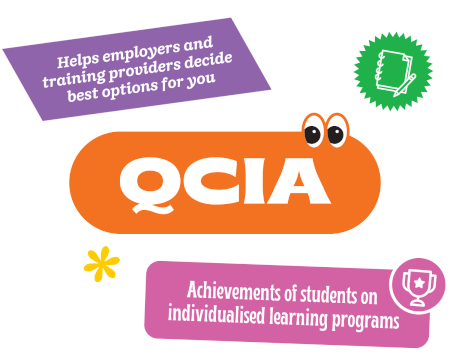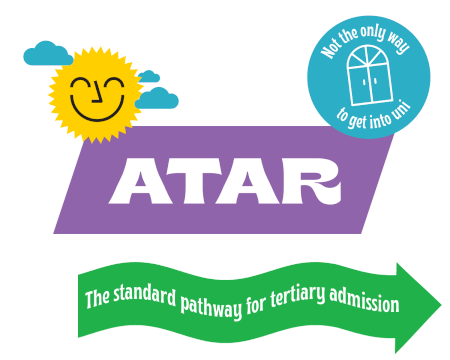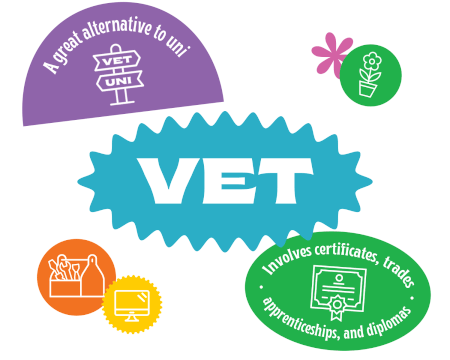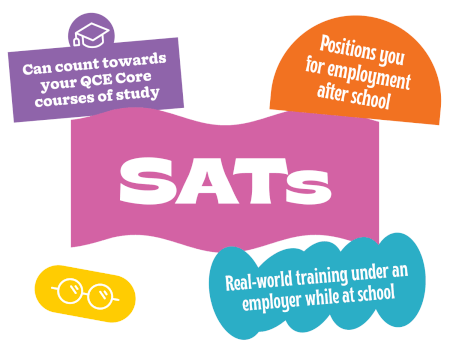If you’re asking yourself ‘what should I do after high school’, we’d suggest taking a step back and looking at the bigger picture: ‘what is the best pathway for me?’.
Choosing to get an ATAR is a great pathway, especially if you plan to go to university straight after school, but it’s not the only option.
In this article, we’ll go through the different pathways that you can take to make the most of your education and prepare for the ‘real world’. Hopefully after reading it, you’ll feel a little closer to deciding what you should do after school.
But before we explore the different pathways, we’d suggest having a think about your strengths, interests and aspirations, these are going to be your guide for picking the best path for you.
Maybe you enjoy working with your hands, or you’ve been told that you’re a really good cook. Maybe you’ve got a knack for helping your mates with those tricky maths questions. Your strengths, interests and aspirations could be a combination of a number of things.
If you’re struggling to figure out exactly what your strengths are, we’d suggest taking a look at these articles:
- What should I do with my life starts with who do I want to be
- From hobby to career to career pathway
- Find your different
- School education options
Another great place to check out is myfuture.edu.au. There you’ll find tips and resources for exploring different career pathways. Watch this video of students’ post school plans for some inspo.
Lastly, the 2023 School Leavers Guide has heaps of career resources and info to help guide your next steps.
Choosing your pathway
Whatever you choose to do in the future, there are a number of different ways to make your education work for you and reach your goal.
Your pathway might look like a bunch of stepping stones, it could split off in different directions, or it could be a direct path. Everyone’s situation and goals are different, so there’s no one ‘right way’ to progress towards your future. If you’re currently in year 10, we’d recommend checking out the career pathways information from QTAC. If you’re in year 11 or 12 and you’re considering ATAR, this guide from QTAC goes into lots of helpful detail. If you’ve got a specific question in mind, we’d suggest taking a look at these ATAR FAQs.
To help you build your pathway, let’s explore the different options available and the educational achievements and qualifications that can help you along the way.

Queensland Certificate of Education (QCE)
What it is
The QCE is Queensland’s senior secondary schooling qualification. It is internationally recognised and provides evidence of your senior schooling achievements.
To get your QCE, you’ll need to achieve the set amount of learning, at the set standard, in a set pattern, while meeting literacy and numeracy requirements. Confused? We promise it isn’t as tricky as it sounds. See our Ultimate QCE Survival Guide for more information.
What it helps with
Working towards your QCE sets you up for the future, giving you the skills you need whether you plan to do further study, learn a trade or get a job after year 12. Regardless of what you decide to do, try to work towards your QCE as it sets a solid foundation.
A QCE alone doesn’t give you an Australian Tertiary Admission Rank (ATAR) but it does open up many other pathways.

Queensland Certificate of Individual Achievement (QCIA)
What it is
If you are a student with learning difficulties or a disability, The Queensland Certificate of Individual Achievement (QCIA) recognises the achievements of students who are on individualised learning programs.
The QCIA is separate from the QCE. The individual learning program for the QCIA does
not have credit value nor can it contribute to the QCE. QCIA students can undertake
some QCE contributing studies while at school and continue working towards a QCE after school.
What it helps with
It provides students with a summary of their skills and knowledge to present to employers and training providers to help them decide the best options to provide.

Australian Tertiary Admission Rank (ATAR)
What it is
An Australian Tertiary Admission Rank (ATAR) is what is used to certify Queensland Year 12 students for entry into tertiary education. In short – if you want to go straight from school into university, the most direct pathway is to go for an ATAR. There are many ways to get an ATAR, check out this ATAR guide for more information.
The ATAR is a percentile rank, not a mark. This rank indicates your position relative to other students in your age group in any given year on a scale of 99.95 down to 0.00.
What it helps with
Because most tertiary courses attract more applicants than there are places available, applicants are placed in a merit order (i.e. ‘ranked’) to allow selection to take place.
Firstly, unis will look at whether you have completed the required ‘prerequisite’ subjects for entry into the course (for example some Bachelor of Physiotherapy courses will have a science subject prerequisite). If you have not successfully completed these prerequisite subjects you won’t be considered for entry to the course, regardless of your ATAR.
The second step is to rank all applicants who satisfy the prerequisites for that course. For most courses, current school-leavers are ranked using the ATAR. The higher your ATAR, the greater your chances of entering that course.
ATAR is the standard pathway used to determine entry for most tertiary courses (in addition to other entry requirements such as subject prerequisites). However, it’s not the only pathway to tertiary study…
- VET qualifications as a stand-alone basis of admission: VET qualifications such as AQF Certificates III and IV, Diplomas and Advanced Diplomas can be used to gain admission to a course but are dependent on the policies of the uni or tertiary institution you’re trying to get into. Refer to the institution website or QTAC website for more information.
- Courses where ATAR is not a selection factor: For some tertiary courses such as VET courses, and some university tertiary preparation courses, an ATAR may not be required. It’s best to check out the institution’s website or the QTAC website for more information about course entry requirements.
- Bridging and preparation courses: If you didn’t get the ATAR you required for entry into your preferred tertiary course, you can still progress on your pathway by completing approved bridging, pathway or preparation courses. Refer to institution websites or the QTAC website for more information.
- Other admissions pathways: Depending on which tertiary institution you choose to go to, there may be additional ways to gain entry. Refer to their website for additional information on other admissions pathways.

Vocational Education and Training (VET)
What it is
Vocational Education and Training (VET) is an education pathway that you can start while at school. VET includes a whole range of qualifications and courses aimed at boosting young people’s skills to equip them for a range of work environments and career paths. This includes things like certificates, trades, apprenticeships, and diplomas.
What it helps with
If you’re not planning on going to university, doing VET while at school is a great use of your time that will prepare you for further study or entering the workforce.
Additionally, VET studies assist with getting that oh-so-important QCE; that’s right, you don’t have to do all ATAR subjects to get it. Check out this article to find out more about How VET in Year 11/12 contributes towards your QCE.
If you do decide to go to university, the best part is that your VET studies can count towards getting an ATAR as well!

School-based apprenticeships and traineeships (SATs)
What it is
School-based apprenticeships and traineeships (SATs) allow high school students, generally in Years 10, 11 or 12, to work towards a recognised qualification.
This will see you getting real-world training under an employer as an apprentice or trainee. If you are unable to find an employer, you can also enroll in a relevant training course that can count towards your apprenticeship later, and you can use this time to do research on the industries and employers you really want to work for.
What it helps with
There’s a range of benefits that come from doing an apprenticeship or traineeship while at school, the main one being that it can position you for employment straight after you finish school.
Additionally, all school-based apprentices and trainees participate in vocational training that contribute to a Certificate II, III or higher vocational qualification which can count towards your QCE Core courses of study.
Taking the first steps on your pathway
Now that you know the different educational pathways available, we hope you’re feeling a little more confident about what your own pathway might look like.
Remember: focus on your strengths. Put this into practice by choosing high school subjects that match your interests and will help you along your pathway. In year 10, you’ll also have the opportunity to work out your education pathway with your school. It’s called a SET plan (which stands for Senior Education and Training Plan) and involves looking at the subjects that you plan to do in senior years based on your interests. For more information, check out this article about SET plans.
Keep in mind, you don’t have to figure it all out by yourself either; chat with your parents, teachers, your school guidance officer or another trusted adult about what your plans are, and they can help you decide what comes next!




